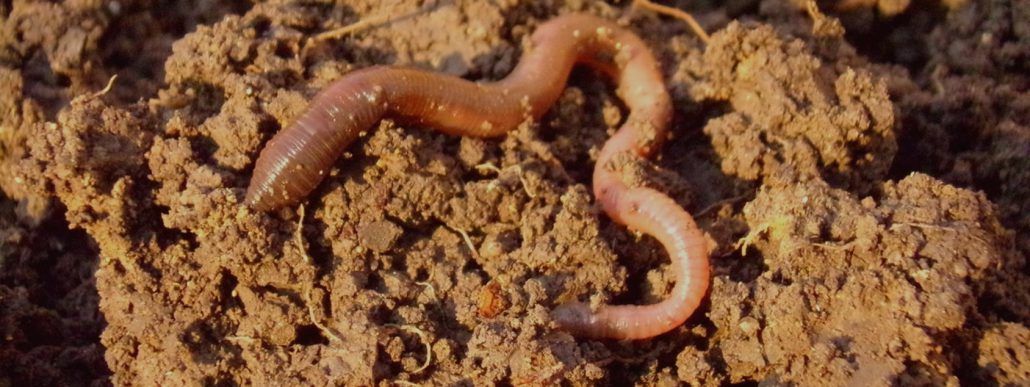
Earthworms are an important indicator of soil health and soil biodiversity. It may be difficult to believe, but every particle of soil in healthy soils has passed through the intestines of earthworms. Earthworms play a crucial role in the formation of healthy soil through aeration, aggregation, moisturising, and nutrition. Each of these roles is explained further below:
Aeration
By definition, aeration involves the process of adding oxygen to an environment. Although earthworms do not directly add oxygen to the soil, they do create burrows that allow for gaseous exchange to take place. Earthworms can burrow both horizontally and vertically in the soil. These vertical burrows are crucial for water infiltration. The holes also allow for carbon dioxide to escape from the soil and for oxygen to enter in. This oxygen entering the soil is important for plant growth. It is also required by microorganisms, e.g. bacteria and fungi, in the process of breaking down or organic matter.
Aggregation
Earthworms improve soil aggregation through two mechanisms, soil mixing and by creating permanent burrows in the soil. Soil mixing occurs when earthworms consume soil organic matter and mix it in their gut. This results in soil excreta that are both nutritious and slimy. The slime material acts like glue, which causes the soil to be resilient against external actions that could crumble the soil aggregate. Furthermore, through permanent burrows, earthworms can improve aggregation at lower soil depths. This occurs when the excreta that was consumed at the top layer is disposed of at a lower depth. This is one of the primary ways that carbon is moved to lower depths in the soil.
Moisture and nutrition
Like most soil organisms, earthworms feed on soil and plant residues (dead roots, leaves, and grasses). When earthworms have digested the material they feed on, they release it into the soil, mostly in the tunnels which they have formed during burrowing. This excreta is moist and rich in nutrients. The tunnels allow for easy plant root movement which is ideal as the earthworm excreta is therefore released directly around the roots.
An earthworm is an all-in-one organism. It builds soil structure, improves soil fertility and moisture, and aids in soil biological processes. Their presence in the soil improves all soil properties. Farm management systems should aim at creating an environment where these organisms can thrive. Charles Darwin, the father of earthworm science, once said: “Without the work of this humble creature, who knows nothing of the benefits he confers upon mankind, agriculture, as we know it, would be very difficult, if not wholly impossible”
To see how earthworms actually aerate, aggregate and add moisture and nutrients to your soil, watch the video below from the MicropolitanMuseum channel (https://www.youtube.com/channel/UCGFFFsNZoZahwQ8UPFIWhFA)
- The management of soils with excessive sodium and magnesium levels - 2023-06-12
- Understanding evapotranspiration better - 2021-10-18
- Soil fungi connections - 2021-09-28
